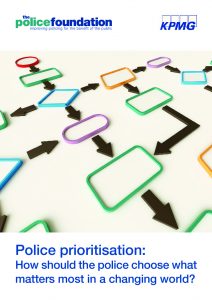Police prioritisation has become an important matter. Previously crime-fighting was centred around reducing high volume crimes such as robbery, burglary and low level violence, but now demand has shifted to more complex offences. The police must also decide how to deal with an increase in non-crime demand, for example in the form of searching for missing people or helping individuals experiencing mental distress. These significant changes in the police’s day-to-day work require not only different types of resources, but also a rethinking of how the police workforce and operating model is structured to cope with these emerging threats.
With budgets tightening and demand increasing, police forces have been under growing pressure to take tough decisions about how resources will be deployed. Due to significant reductions in frontline policing it is becoming more and more difficult to provide a universal offering to the public they serve. Instead, police leaders are faced with stopping or reducing their involvement in certain activities and while trying to maintain public confidence levels.
Against this difficult backdrop, deciding what matters most and where resources should be targeted is a key question facing policing today. This issue was explored in the first of a series of policy dinners in partnership with KPMG.
